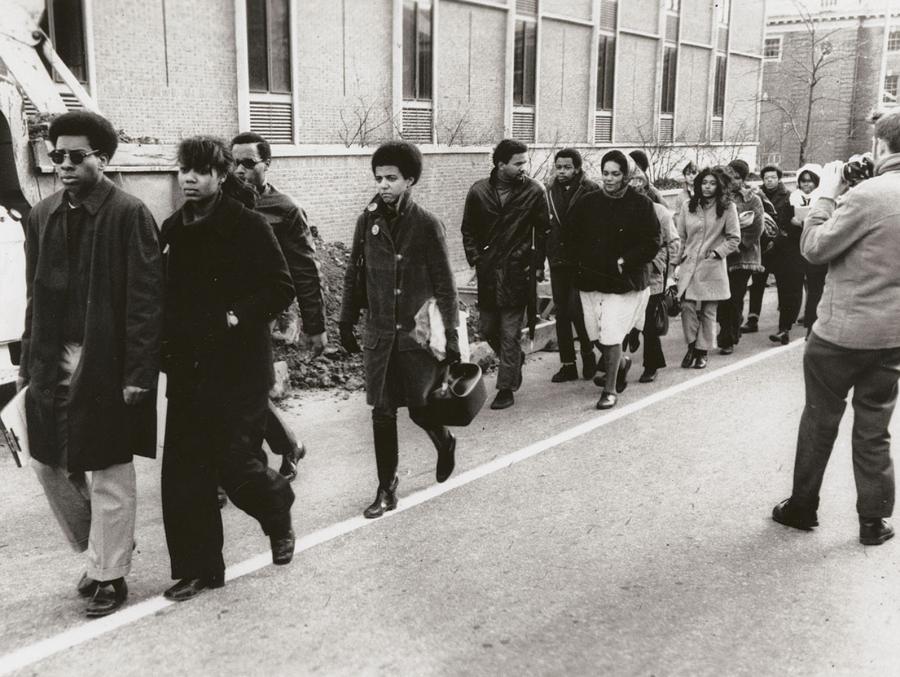By Francis Torres
The first sight that greets visitors to the Third World Center (TWC) is a banner proclaiming the achievement of “Over 30 Years of Unity Through Diversity.” This brief statement encapsulates the mission of the Center: to help foster a sense of community across minority groups on campus while respecting the identities of the people it serves. While the Center is known on campus for its support network for minority students, its robust history of activism — key to understanding both its origins and its continued vibrancy — remains relatively hidden to most.
The TWC’s founding is rooted in the 1968 student walkout and the 1975 Third World Coalition takeover of University Hall. Inspired by other 1960s university protests, as well as the civil rights movement, African-American students took it upon themselves to lobby for increased black enrollment. In 1968, when their initial attempts were ignored, the members of the Afro-American Society organized a five-day walkout of 65 black students — three quarters of the African-American community on campus — to make their voices heard. Encapsulating minority student opinion, walkout participant Sheryl Brissett-Chapman ’71 said, “We’re only visible when we’re not here.” The protest led then-President Donald Hornig to promise increased financial aid for minority students and extra spending on the recruitment of minority faculty.

But while the walkout brought more minority students to Brown, communities of color still faced many obstacles on campus. In 1974, Hornig proposed raising tuition while dodging the promises he made in 1968. When traditional student protests proved ineffective, a group of minority students — the multiracial Third World Coalition — made the unprecedented choice to occupy University Hall the following year. As a result of the storied takeover, financial aid was made more readily available for students from underprivileged backgrounds, and the administration committed to heavily increasing the presence of all minorities on campus. Through their efforts, the students laid the foundations for what would become the Third World Center.
Around the time of the protests, students started the first minority organizations on campus, such as the Afro-American Society, Asian American Students Association, Chicanos de Brown and Latin American Student Organization. The Center itself was formally founded in 1976 to meet the growing need for formalized collaboration across these groups. In 1985, with the Center as a new organizational tool, about 350 students protested for five weeks against the University’s failure to effectively follow through on its promises of minority representation and financial aid. The Center organized sit-ins and protests in the main spaces of Brown’s campus, culminating in a “takeover” of the John Carter Brown library steps. This was the first time that African Americans, Asians and Latinos organized to protest in solidarity. Their actions led to greater minority representation in the administration, greater concern for the harassment of black students, the formation of an investigatory panel on minority issues and the procurement of Partridge House as a larger, new home for the TWC.
Beyond the TWC’s activism, the Center’s name seems to be another obfuscated element of its history that, without deeper understanding, might be perplexing and even open to criticism. When students started organizing around issues of minority representation, the term “Third World” didn’t refer to underdeveloped countries, but to a group of nations committed to forging their own Third Way beyond the perceived imperialist influences of the capitalist and communist blocs. The term implied resistance against the abuses of externally imposed power structures. To name is to create, and many who disliked the disempowering connotations of the word “minority” switched to the term “Third World” to describe their own struggle for representation in the context of the United States. The new name allowed minority students to build coalitions across racial and cultural lines in order to emphasize their commonality.
Beyond activism, the Third World Center maintains and celebrates this commonality through its diverse programs, which for 38 years have allowed students to tap into the resources that previous activists fought for. By maintaining and expanding the close-knit community that first flourished in groups like the Afro-American Society and later blossomed into the Third World Coalition, the Center — itself created by activism — protects and celebrates the memory of some of Brown’s seminal struggles. It makes the unseen visible, creates a safe space for those who need it most and assists them in facing the ongoing challenges that minority communities still struggle with today.
